Second week of field work and major achievements at the Urgeiriça mine, Portugal
The second half of the UNEXMIN’s field tests at the Urgeiriça underground flooded mine happened between the 1st and 7th of April, in Portugal, following the first two weeks of trials. For this second half of testing the team brought together both UX-1a and UX-1b to be tested in the waters of Urgeiriça. The highlights of this second half are:
- 1st of April (Monday): The UNEXMIN team tested the UX-1a in the Lab test tank in the morning and packed both UX-1a and UX-1b robots and the needed equipment for the Urgeiriça trials in the afternoon. The team arrived at the Urgeiriça mine site around 20h00.
- 2nd of April (Tuesday): The equipment was unpacked, the control room set-up and fiber optic communication with the shaft switch was tested. A field laboratory was also installed with all the required equipment in the control room, to assemble the UX-1 robots. In the afternoon, after all the basic tests/checks, the first dive was done with UX-1a. The main goal of this first dive was to map the vertical shaft with the robot facing the shaft itself, i.e., pitch down and pitch up. The maximum depth reached was 27m below the surface. Up to 20 meters deep the visibility was disturbed by the bubbles accumulated in the dome glasses of the cameras, which also disturbed the DVL and, consequently, the robot’s navigation. After 20m depth the visibility was good and the water clear.
- 3rd of April (Wednesday): The robot’s weight was calibrated in water to have a better Roll when pitching Up and Down. A mapping dive was made on the central shaft up to 46.5m where all SLSs (Structured Light Systems) were tested with the robot in pitch down and pitch up positions. The construction of real-time maps using the “octomap” technique was also tested successfully.
- 4th of April (Thursday): Open day to media and the general population at the trial site. Two national television stations (SIC, RTP) were present at the testing site. Norbert Zajzon (project coordinator; UNIM) and Alfredo Martins (INESC TEC) were interviewed by the television stations, which showed a lot of interest in the project.
During this day two dives were made, one in the morning and the other in the afternoon. The morning dive was to the first level (22m below the surface) that served as a demonstration to the media and also to validate the mapping with all the sensors. At the entrance of this level a possible uranium rock was visually identified by Janos Horvath (Geo-Montan), proving the usefulness of the UNEXMIN technology to geologists and alike. In the afternoon dive, the depth of 46.2m was reached. In the ascent to the surface there was a power failure in the robot. UX-1 was successfully recovered due to the safe mechanisms applied by the UNEXMIN team, such as the umbilical cord that links the robot to a power source. - 5th of April (Friday): “Exame informática”, a Portuguese technology focused magazine, made a one-day mission coverage of the UNEXMIN project. Two dives were performed, one in the morning and the other by the end of the day. The morning dive served to validate the correct functioning of the robot after the corrections of the problems from the previous day. The end-of-the-day dive served to validate the real-time mapping with SLS and Multibeam sensors, where the robot reached a depth of 58m. After the dive, and taking advantage of the fact that there was no sunlight, the team tested the LEDs’ UV-light with the minerals example, in order to calibrate the triggering time of the LEDs and their intensity to facilitate identification of minerals.
- 6th of April (Saturday): Two dives were performed, one up to 68m in the morning and another until the maximum depth reached, as of today, by the UX-1 robot: 106.5m! In the afternoon dive it was possible to obtain multispectral images in the 3rd level of rocky areas of interest. It was also possible to enter the gallery up to 9 meters and build the 3D map of it.
- 7th of April (Sunday): Packing and cleaning the site.
The field trials at the Urgeiriça flooded mine site were completed successfully with a great effort made by the UNEXMIN’s technical teams. Together with the help from the local stakeholders (EDM), the elapsing of the trial – on both the first and second halves – went very well. From this long but fruitful trial, the major take-outs are:
- The first two robots, UX-1a and UX-1b, were for the fist time working together on the field
- The biggest dive with a UX-1 robot was reached – 106.5m
- Scientific instrumentation was tested successfully – UV light, water sampler and others
- Navigation and movement within the application environment saw improvements – moving pitch down and pitch up inside the shafts
- Good coverage and dissemination of the UNEXMIN project’s activities to the local and national media in Portugal.
The UNEXMIN partners will now continue with the project’s development – which includes the development of the third robot, UX-1c – and make preparations for the next field trial in the Ecton mine, UK.

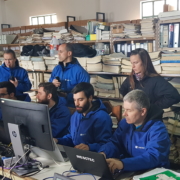
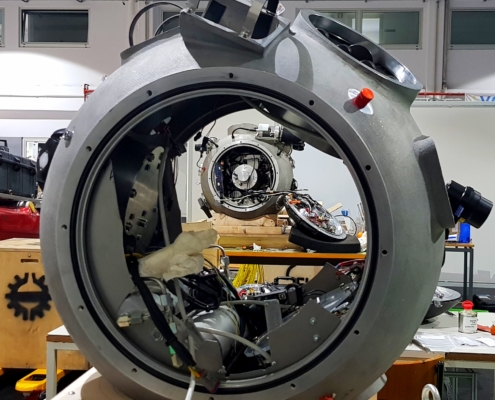

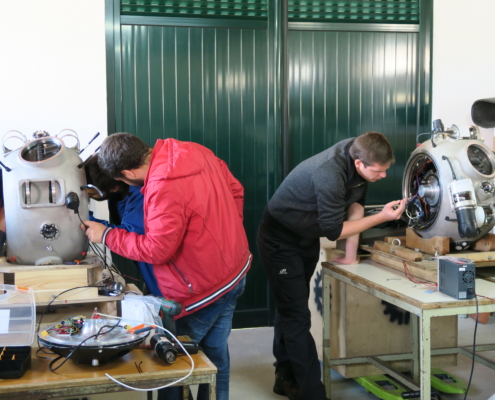
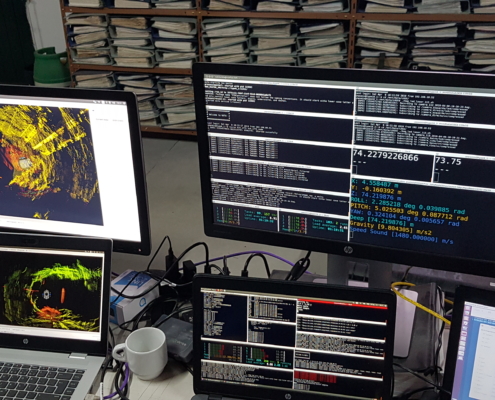

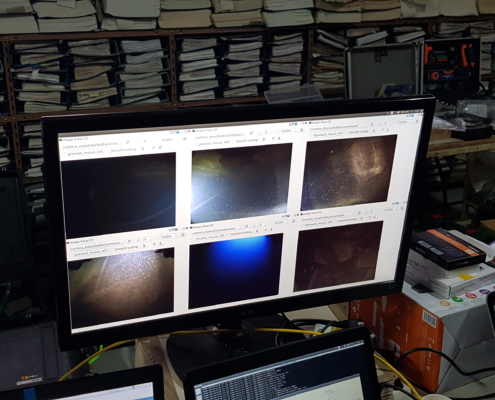


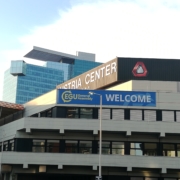

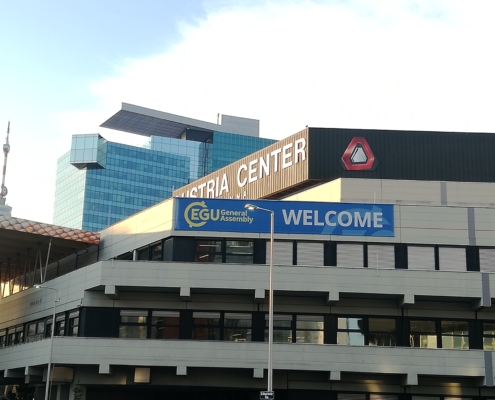
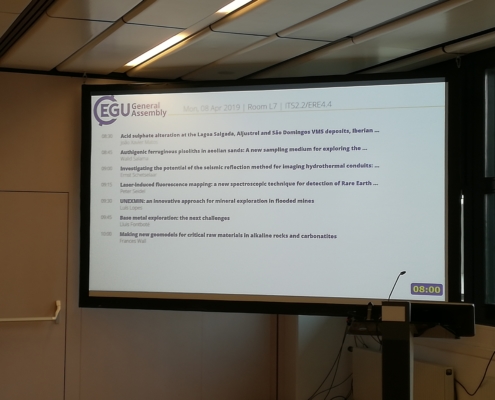
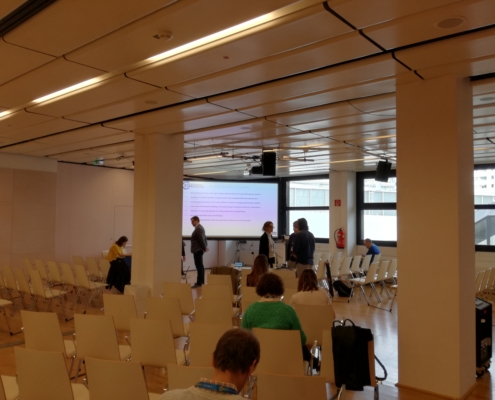
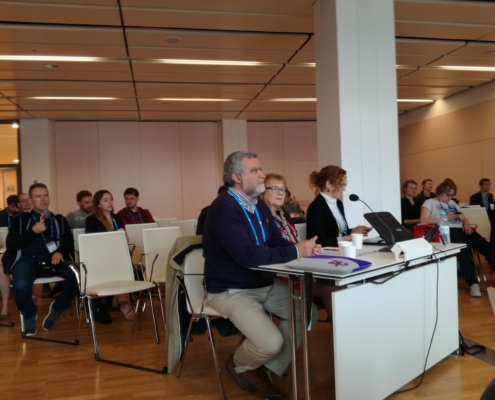
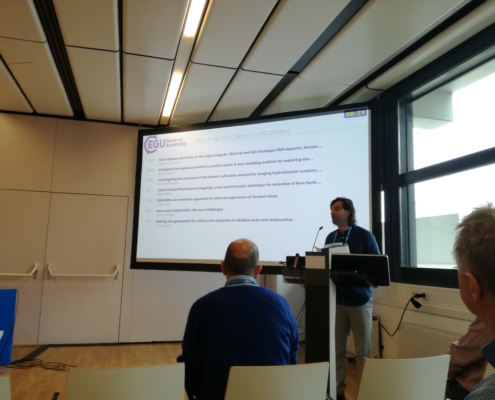
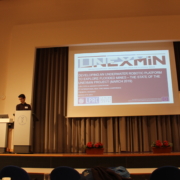
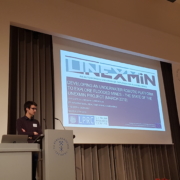
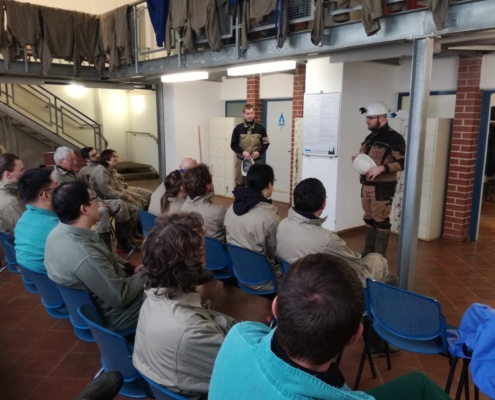
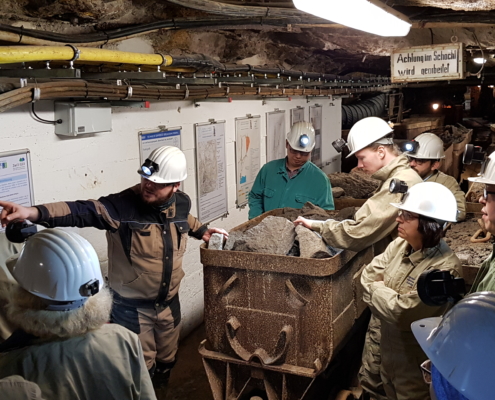
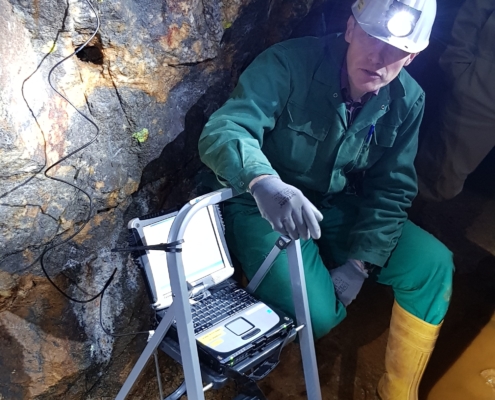
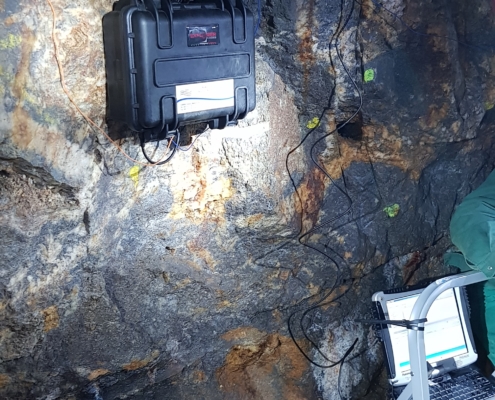

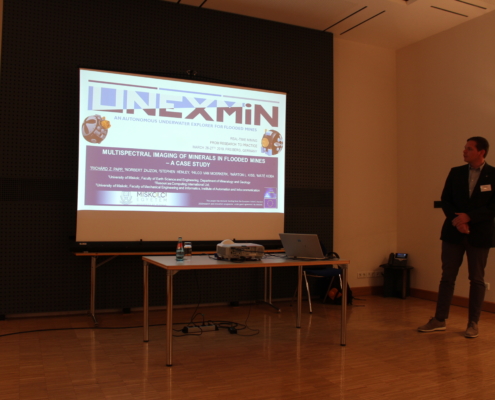


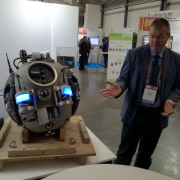
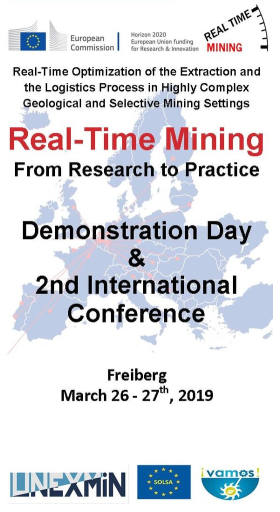 For this event, the UNEXMIN project will bring a total of four presentations, focussing on 4 areas:
For this event, the UNEXMIN project will bring a total of four presentations, focussing on 4 areas: